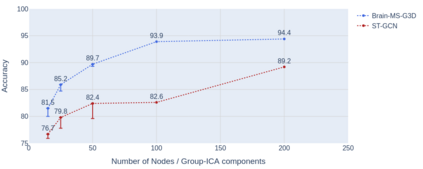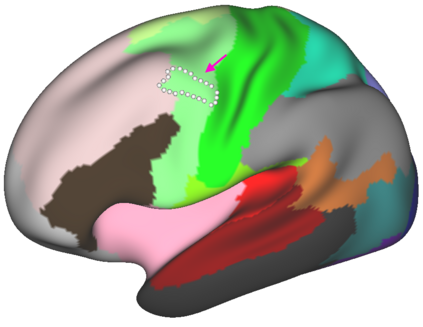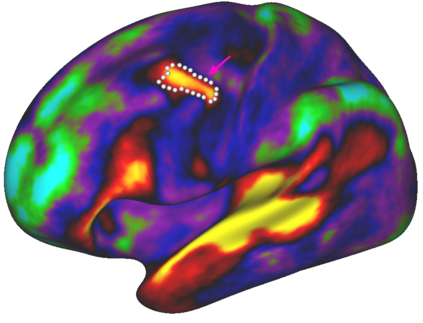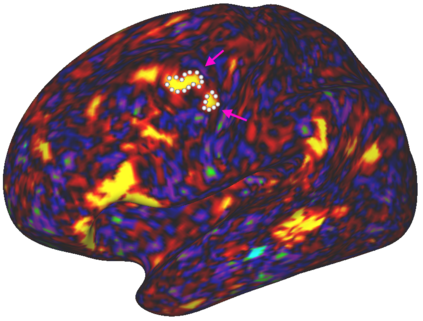The study of functional brain connectivity (FC) is important for understanding the underlying mechanisms of many psychiatric disorders. Many recent analyses adopt graph convolutional networks, to study non-linear interactions between functionally-correlated states. However, although patterns of brain activation are known to be hierarchically organised in both space and time, many methods have failed to extract powerful spatio-temporal features. To overcome those challenges, and improve understanding of long-range functional dynamics, we translate an approach, from the domain of skeleton-based action recognition, designed to model interactions across space and time. We evaluate this approach using the Human Connectome Project (HCP) dataset on sex classification and fluid intelligence prediction. To account for subject topographic variability of functional organisation, we modelled functional connectomes using multi-resolution dual-regressed (subject-specific) ICA nodes. Results show a prediction accuracy of 94.4% for sex classification (an increase of 6.2% compared to other methods), and an improvement of correlation with fluid intelligence of 0.325 vs 0.144, relative to a baseline model that encodes space and time separately. Results suggest that explicit encoding of spatio-temporal dynamics of brain functional activity may improve the precision with which behavioural and cognitive phenotypes may be predicted in the future.
翻译:功能性大脑连通(FC)研究对于理解许多精神紊乱的基本机制十分重要。许多最近的分析都采用了图表革命网络,以研究功能类相关状态之间的非线性互动。然而,虽然已知大脑激活模式在时间和空间上都有分级安排,但许多方法未能产生强大的空间-时空特征。为了克服这些挑战,增进对远程功能动态的了解,我们翻译了一种方法,从基于骨骼的行动识别领域入手,目的是模拟空间和时间之间的相互作用。我们利用人类连接项目关于性别分类和流动情报预测的数据集来评估这一方法。为了说明功能组织的主题地形变化,我们用多分辨率双偏移(针对特定对象)的ICA节点来模拟功能连接。结果显示,性别分类的预测准确率为94.4%(与其他方法相比增加了6.2%),与0.325比0.144的流性智能情报的关联性,与将空间和时间分别编码的基线模型相对。结果显示,对空间和时间的功能性动态的精确性定值可能与未来大脑的功能性动态的精确性。











